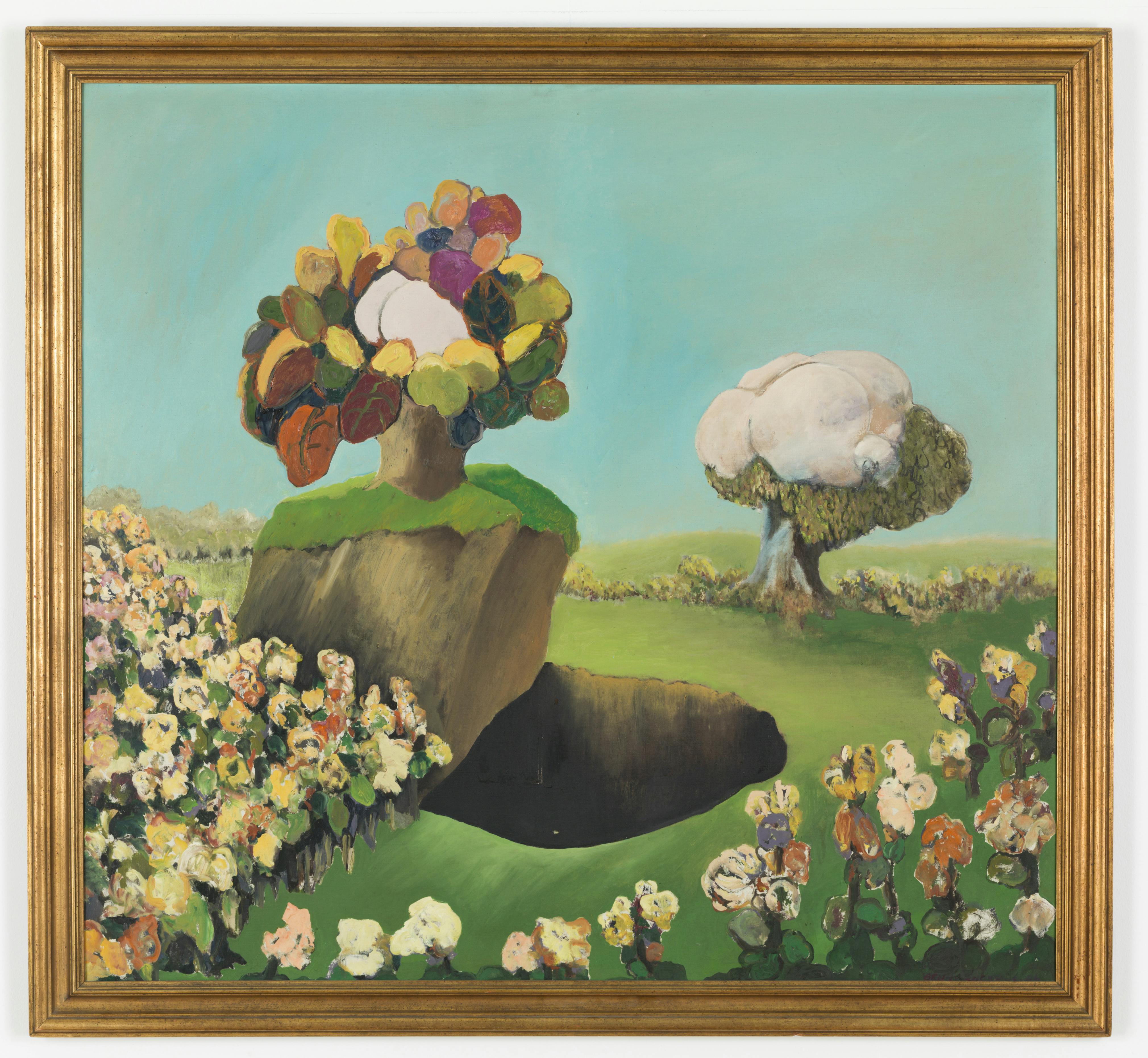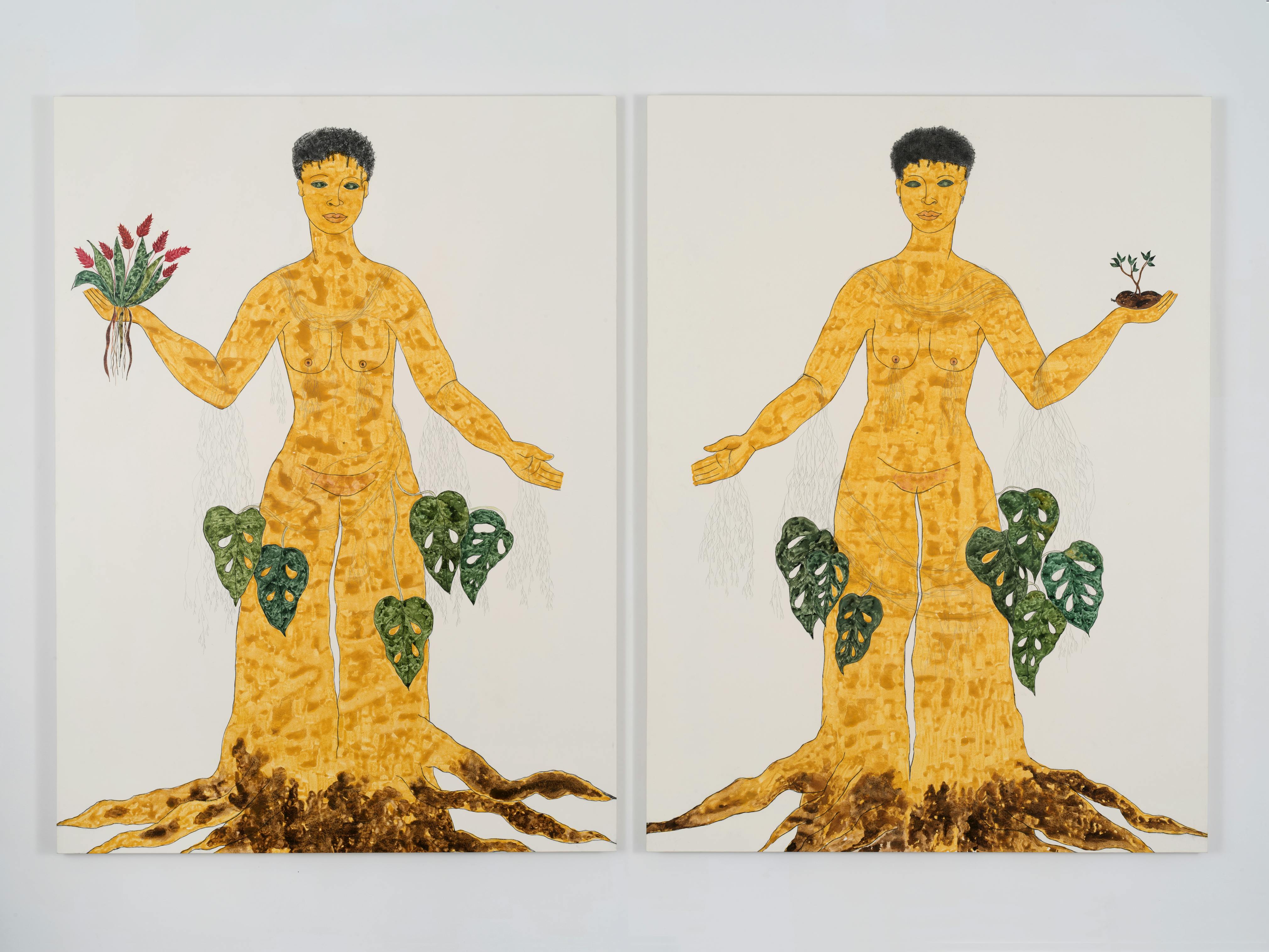Making an Exhibition

Kerry James Marshall, Silence is Golden, 1986. Acrylic on panel, 49 × 48 × 2 in. Studio Museum in Harlem; Gift of the artist. 1987.8. Photo: Marc Bernier

Kerry James Marshall, Silence is Golden, 1986. Acrylic on panel, 49 × 48 × 2 in. Studio Museum in Harlem; Gift of the artist. 1987.8. Photo: Marc Bernier
One of the exhibitions to open the Studio Museum in Harlem’s new building is a rotation of works from the Museum’s unparalleled collection, which includes nearly nine thousand works of art by over eight hundred artists active from the early nineteenth century to the present. It’s not easy to organize a show that celebrates such breadth.
This essay offers a brief summary of the complex process of arriving at From Now: A Collection in Context, the collection installation that marks the opening of our new building.
Inventorying, cataloguing, and researching works in the Museum’s collection has been a long-term collaborative effort between the Curatorial and Collection and Exhibition Management departments. The two departments engaged in lively dialogues about works in the collection that helped shape the approach to From Now. Additionally, the Collection and Exhibition Management team assessed the condition of, repacked, and photographed thousands of works, ensuring that the collection is now more accessible online for our audiences both at home and around the world. With the implementation of a new digital asset management system and an upgraded collections management system, the two departments diligently worked on updating and maintaining the many assets and records related to the objects in the collection. This behind-the-scenes work is crucial to collections care and was essential in providing the information and tools necessary to organize a collection exhibition of this size and scale, the largest in the Museum’s history.


Kerry James Marshall, Silence is Golden, 1986. Acrylic on panel, 49 × 48 × 2 in. Studio Museum in Harlem; Gift of the artist. 1987.8. Photo: Marc Bernier


Betye Saar, Indigo Mercy, 1975. Mixed media assemblage, 41 1/2 × 13 × 13 in. Studio Museum In Harlem; Gift of the Nzingha Society, Inc. 1979.9 © Betye Saar. Courtesy the artist and Roberts Projects, Los Angeles, CA. Photo: Adam Reich
The Museum has always rejected the idea of a singular narrative of art history, particularly in relation to the work of artists of African descent. Past collection shows have celebrated instead themes as varied as color and labor, the domestic and the sartorial. From Now, with its multiple curatorial voices and wide range of works on view, follows in this lineage of exhibitions committed to demonstrating the many perspectives, identities, and forms of Black artistic production.


Benny Andrew, Trees of Life, 1966. Oil on canvas, 46 1/2 × 50 in. Studio Museum in Harlem; Gift of Dr. Alexander Thomas. 1983.16.1 © 2025 Estate of Benny Andrews/Licensed by VAGA at Artists Rights Society (ARS), NY, Courtesy Michael Rosenfeld Gallery, LLC, New York, NY. Photo: Adam Reich


Deana Lawson, Roxie and Raquel, 2010. Inkjet print, Mounted on Sintra, 35 × 43 in. Edition 4/6 + 2 APS. Studio Museum in Harlem; Bequest of Peggy Cooper Cafritz (1947–2018), Washington DC, Collector, Educator, and Activist 2018.40.173. Photo: John Berens
In considering how to celebrate both the collection and our new building, the Curatorial Department discussed different thematic approaches and foci present in the collection. What we landed on acknowledges the plurality of voices, motifs, and ways of art making. A constellation of themes—with each grounded by works, such as Kerry James Marshall’s Silence Is Golden (1986) and Betye Saar’s Indigo Mercy (1975)—reveals the numerous ways in which the collection tells stories, relays ideas, and prompts questions. What is felt by audiences, hopefully, is that these themes are not static, but that they instead impart countless approaches to the works in the Museum’s collection, in turn conveying the richness of Black artistic production.
Upon entering the Museum’s new building, visitors will be greeted with Glenn Ligon’s Give Us a Poem (2007), a work now well-associated with the institution. In response to the neon sculpture’s flashing exhortation for the individual and the collective found in “ME” and “WE,” the first thematic approach to the collection is a sprawling installation centered around the theme “US.” Through photographs and works on paper made over a hundred-year period, this section celebrates Black life, joy, sorrow, and possibility. The collection exhibition continues in spaces throughout the building, infusing our new home from top to bottom with works made by artists of African descent. Audiences can explore other themes, such as bodily presence, the sonic, and spirituality. These sections evolve over the course of the new building’s inaugural year, as works rotating in provide fresh viewpoints and ways of looking. This dynamic, expansive installation serves as an offering, a portal to engaging with the multiplicity of narratives that emerge out of the works in the Museum’s collection.


Lonnie Bradley Holley, Reaching My Gold, 2011. Mixed Media, 50 × 15 × 14 1/2 in. Studio Museum in Harlem: Gift of Martin and Rebecca Eisenberg in honer of Thelma Golden 2023.39.5 © 2025 Lonnie Holley/Artists Rights Society (ARS), New York. Photo: John Berens
With works rotating in and out on a regular basis, From Now unfolds over the course of the year as a call-and-response, as each member of the Curatorial team responds to the conversations brought forth by the previous rotation. A form of dialogue found across many genres and often associated with African and African-diasporic communities and traditions, the call-and-response structure allows for the exchange of ideas alongside spontaneity and play. The result is an ever-evolving conversation between works of art that transcends geographical and generational divides and medium-specificity. Audiences will thus see how objects within the collection can be in dialogue with each other, expanding the possibilities of meaning-making and understandings of shared histories. The journey—and the discourses, lessons, and tensions along the way—is what makes the process meaningful.


William T. Williams, Trane, 1969. Acrylic on canvas, 108 × 84 in. Studio Museum in; Gift of Charles Cowles, New York 1981.2.2 © William T. Williams; Courtesy Michael Rosenfeld Gallery LLC, New York, NY. Photo: Adam Reich


Rosan Paulino, Gêmeas (from the “Jatobá” series), 2023. Graphite, acrylic, and natural pigment on canvas, each: 84 5/8 × 63 in. Studio Museum in Harlem; Museum Purchase with funds provided by the Holy Peterson Foundation 2024.38.1A-B © Rosana Paulino. Courtesy the artist and Mendes Wood DM, São Paulo, Brussels, Paris, New York. Photo: John Berens